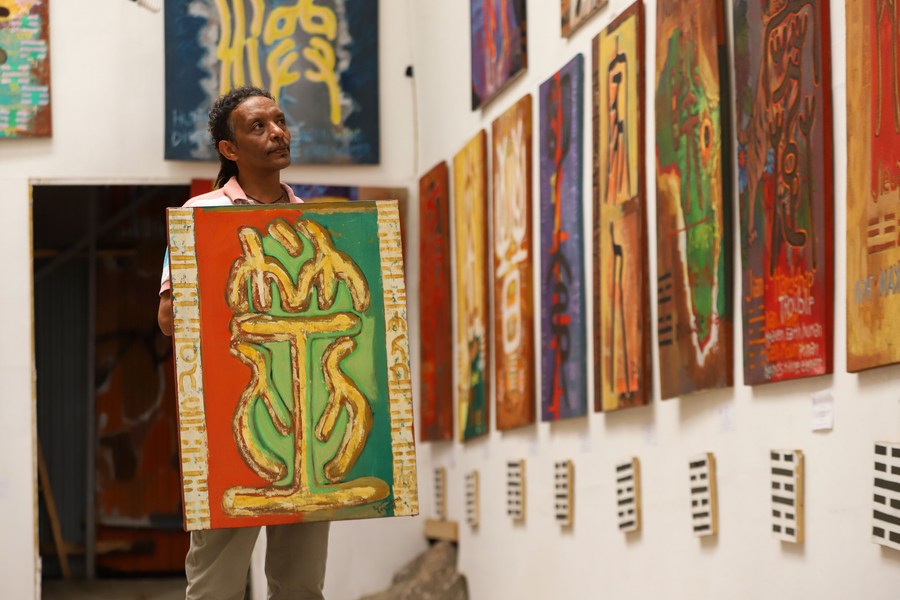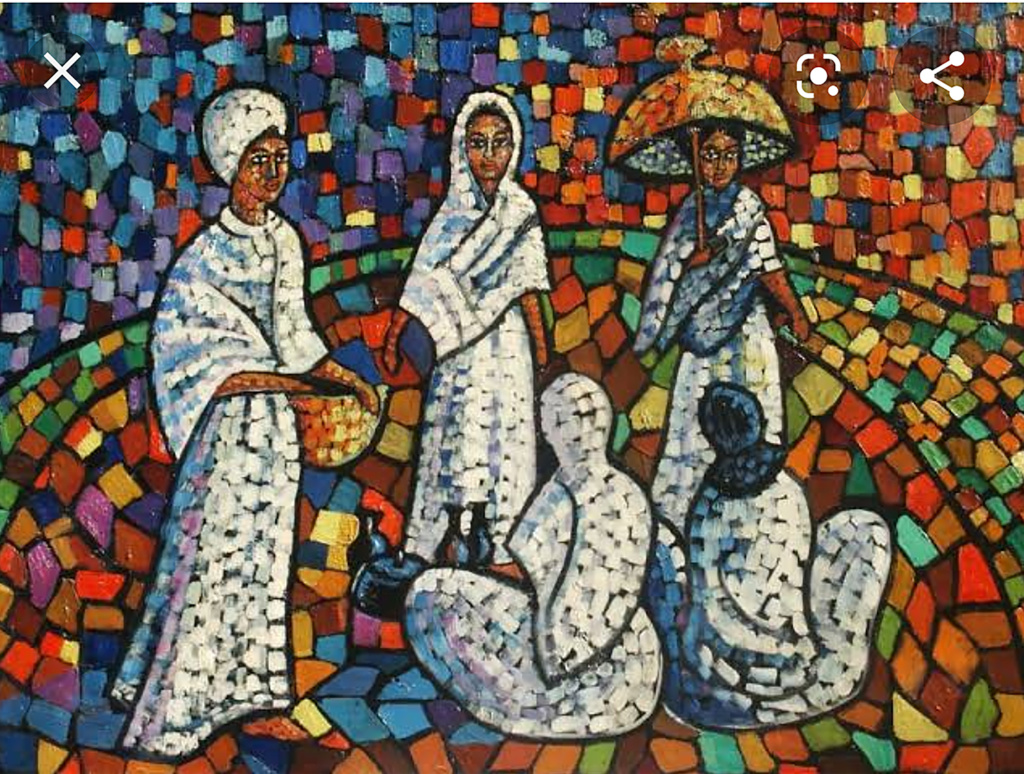Standing in front of a canvas in an Addis art gallery, 50-year-old artist Dawit Muluneh is immersed in painting ancient Chinese characters. Around him are collections of his artwork based on the Chinese classic “I Ching,” or the “Book of Changes,” which has existed for over 2,000 years as a source of Chinese culture.
Dawit explains, “I Ching means truth and is founded on the eight gifts of nature. In general, I Ching explains the wisdom of nature.” The 64 paintings represent 64 divinatory symbols in the book, portraying the daily interaction between humans and nature, imparting knowledge and emotions with descriptions in Chinese, English and Amharic.
Though not a Chinese speaker, Dawit became interested in I Ching after his friend introduced him to an English book explaining the ancient masterpiece. “The paintings express delight, hindrance, relief, encountering, courage, childhood, and union,” he says, inspired by the Chinese characters for humbleness and mutual influence.
In his year-long creative process, Dawit researched these characters online, surprisingly finding similarities between Ethiopian and Chinese ancient civilizations, painting styles, landscapes, and people’s attitudes toward nature. “Both have ancient histories in clay, traditional medicines, and musical instruments,” notes the artist, stressing that cultivating such knowledge aids prosperity.



